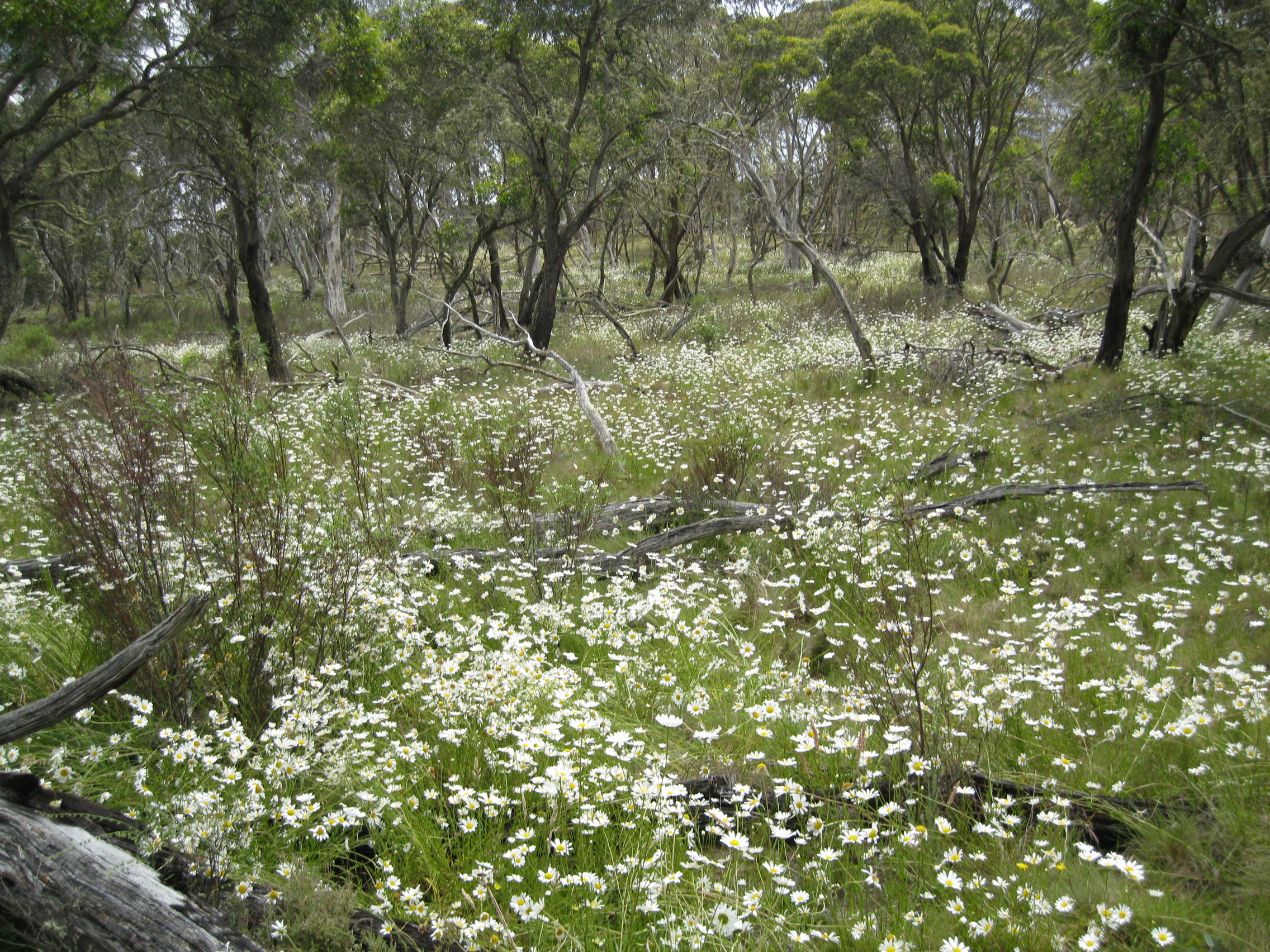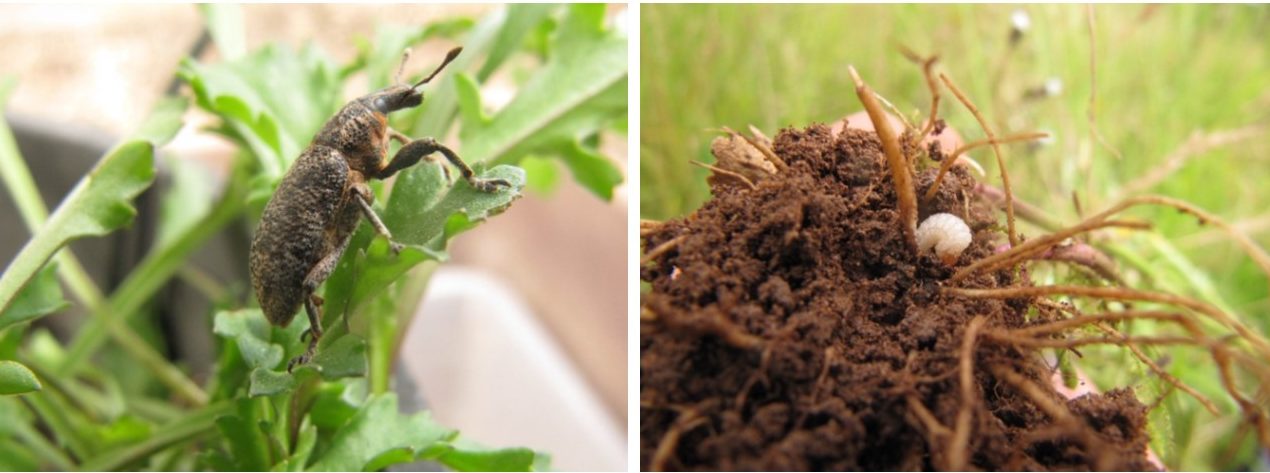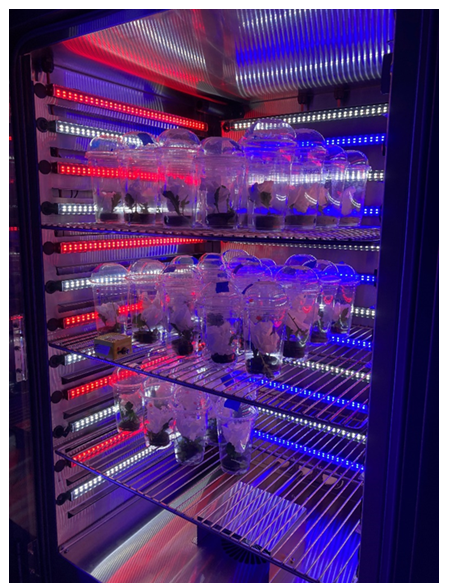Ox-eye daisy
Ox-eye daisy (Leucanthemum vulgare) is a rhizomatous perennial that is native to Europe and which has become an invader in over 40 countries (including Australia and New Zealand). In Australia, it is found in NSW, ACT, Victoria (where it is a declared noxious weed), South Australia and Tasmania.
This sub-project focuses on the root-feeding weevil Cyphocleonus trisulcatus, a second promising candidate biocontrol agent for ox-eye daisy. A first promising candidate agent, the rhizome-feeding moth Dichrorampha aearata was tested in both Switzerland (by CABI) and in quarantine in Australia (by NSW DPI) as part of a previous project supported by the Australian Government and an application to release it in Australia is currently being prepared. However, ox-eye daisy like other invasive Asteraceaous weeds (e.g. parthenium weed) is very unlikely to be controlled by one biocontrol agent. It is thus considered prudent and cost-effective to test a second most promising agent while all the relevant Australian non-target species gathered to test the first candidate agent are still in culture. Approval for the release of the weevil in Australia will be sought from the relevant authorities, pending results indicate that it does not pose a threat to non-target species.
Andrew McConnachie of NSW Department of Primary Industries is leading this sub-project.

An infestation of ox-eye daisy (Leucanthemum vulgare) in NSW.
Background
Why is the weed a problem?
Ox-eye daisy mature plants can produce up to 26,000 seeds, which are dispersed by animals, vehicles and water. Seed longevity is high and up to 80% of propagules are viable for six years (with some reportedly up to 39 years). The weed is not palatable to cattle and affects pastoral lands by reducing carrying capacity. Dense infestations exclude other plant species, leading to soil erosion and depletion of soil organic matter. The species thrives in disturbed areas such as roadsides and cleared land; however, of greatest concern is its ability to aggressively invade undisturbed sub-alpine grasslands, snow gum woodlands and wetlands (of note is the current situation in Kosciuszko National Park where key threatened species are being out competed by ox-eye daisy).
How is the weed currently managed?
While mechanical and chemical control can be successfully implemented to manage localised infestations of ox-eye daisy, there is an urgent need for the sustainable management of this invasive plant at the landscape level. Biocontrol in environmentally sensitive areas that contain threatened species where herbicides cannot be readily sprayed will be an important future management strategy.
Previous research
In 2008, a programme was initiated to investigate the prospects for the biocontrol of ox-eye daisy in North America. Over the last 12 years, CABI Switzerland have identified and studied a suite of promising candidate agents including the root-feeding moth Dichrorampha aeratana (Lepidoptera: Tortricidae), root-feeding weevil Cyphocleonus trisulcatus (Coleoptera: Curculionidae) and flower head-mining fly Tephritis neesii (Tephritidae), among others. Of these, the root-feeding moth was identified as holding the most immediate promise in terms of specificity and is being developed further as the first biocontrol agent for North America.
Ox-eye daisy was nominated and endorsed by the national Environment and Invasives Committee as a target for biocontrol in Australia in February 2020. The root-feeding moth was the first candidate agent investigated for the biocontrol of ox-eye daisy in Australia as part of a project under the Australian Government programme Rural Research and Development for Profit (RRnD4P) (Round 2; 2016-2020). An application for the release of this moth in Australia is currently being prepared. Concurrently in the same project, a rearing colony of the root-feeding weevil was established at CABI Switzerland in 2019 to conduct preliminary no-choice oviposition and larval development tests on 14 non-target species. Results were encouraging as larvae of the weevil were only recorded on ox-eye daisy and Tanacetum parthenium, albeit in very low numbers on the latter species.

Adult (left) and larva (right) of the root-feeding weevil Cyphocleonus trisulcatus, a candidate biocontrol agent for ox-eye daisy (Photos: CABI Switzerland).
Trust-funded sub-project
The key activities of the sub-project are to:
- Import the weevil into an Australian quarantine facility and establish/maintain a culture.
- Conduct host-specificity tests in Switzerland (subcontract to CABI; no-choice and open field tests) and in quarantine in Australia (no-choice and paired-choice tests).
- Assess ox-eye daisy seedbanks and population dynamics at monitoring sites (Kosciuszko National Park, Mongarlowe, Mt Hotham) to add to a long-term dataset initiated in a previous project to assist with future evaluation of biocontrol.
- Prepare and submit to the relevant authorities an application for its release in Australia for the biocontrol of ox-eye daisy, pending results indicate that the insect does not pose a threat to non-target species.
Progress
2020/21
A subcontract was established with CABI Switzerland, to undertake some of the host-specificity testing with the candidate biocontrol agent for ox-eye daisy, the root-feeding weevil Cyphocleonus trisulcatus. In no-choice trials with the candidate agent performed on 20 non-target species during the 2020 northern hemisphere spring/summer, larvae or newly emerged adults of the insect were found on most of the ox-eye daisy and Shasta daisy plants, and only on a single plant of each of Achillea ptarmica and Tanacetum parthenium. Additional no-choice trials on 11 non-target species as well as open-field trials on 7 non-target species, including species on which the insect developed during the 2020 no-choice trials, were initiated in May-June 2021 in Switzerland and are still on-going.

The ox-eye daisy candidate agent Cyphocleonus trisulcatus in the containment facility in Orange, NSW, undergoing a ‘winter’ treatment for 8 weeks.
The candidate agent was imported into a containment facility in Australia in June 2020 and initial no-choice trials using some of the imported insects were performed on three non-target plant species, all of which were not attacked by the agent. The remaining insects imported are currently being exposed to artificial conditions to synchronise their life cycle with southern hemisphere seasons to establish a laboratory culture for use in future testing. Ox-eye daisy seedbanks and plant population dynamics were re-assessed at three monitoring sites, established as part of a previous project, to gather baseline data before the release of biocontrol agents on this weed.


